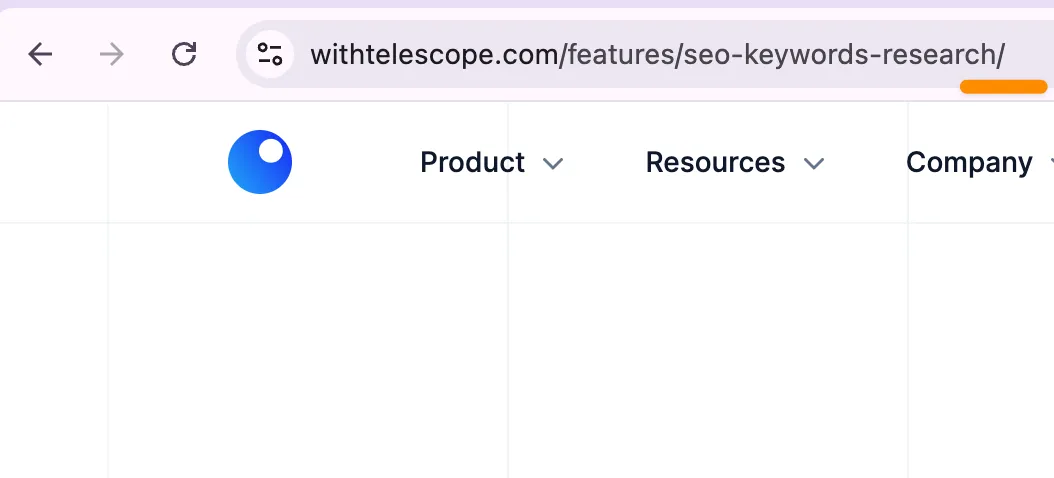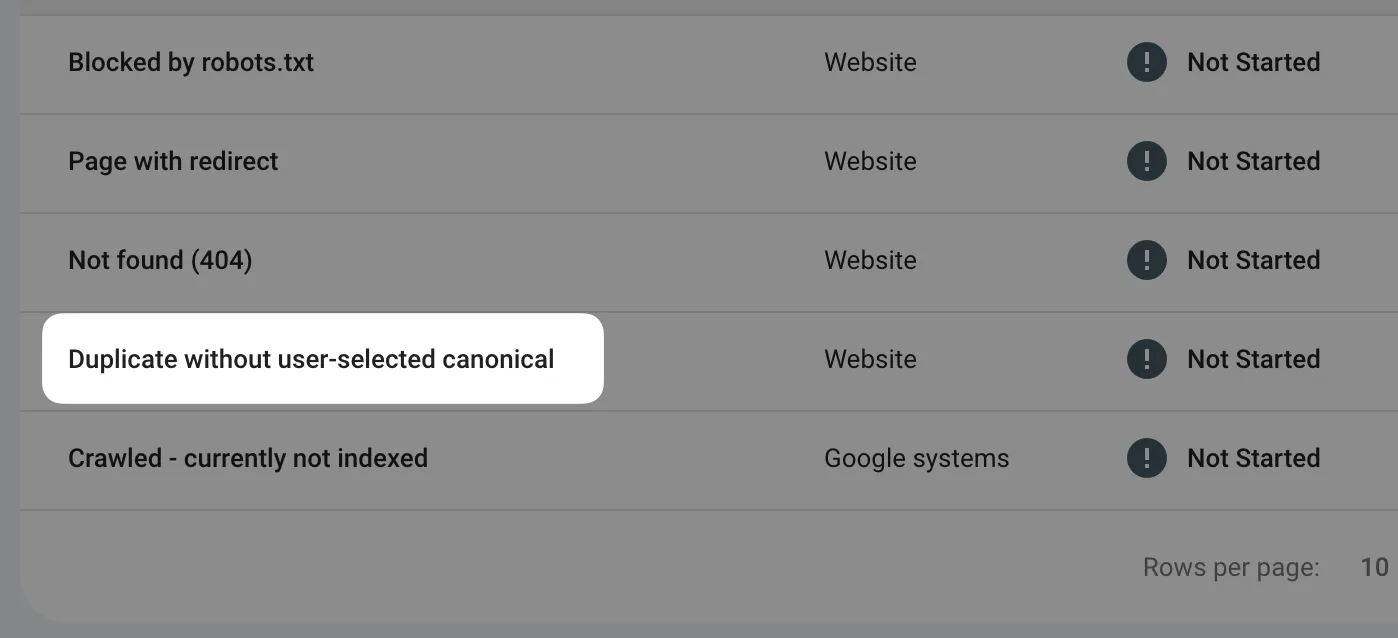Trailing Slash in URL and SEO: What Do You Need to Know
A trailing slash is simply a forward slash (/) at the end of a URL. For example, https://example.com/blog/ url has a trailing slash, while https://example.com/blog does not. Although they may seem insignificant, trailing slashes can affect the SEO of your website.
In the past, trailing slashes were used to tell the difference between directories and files. URLs with a trailing slash indicated a directory, while those without pointed to a file. For example, the URL example.com/page/ would suggest a directory, whereas example.com/page would indicate a file. Today, most URLs don’t directly correspond to files, so this distinction is less relevant. Modern websites often store content in databases, making the trailing slash more of a stylistic choice.
For example, at Telescope, we’re using trailing slashes in all the URLs.

Impact on SEO
The most important thing to remember is that search engines like Google see URLs with and without trailing slashes as different pages. For example, Google would see https://example.com/page and https://example.com/page/ as two separate pages. This can cause problems with duplicate content if the same content is accessible at both versions of the URL.

Because of this, it’s vital to implement handling of trailing slashes on your website.
Best Practices for handling Trailing Slashes
Consistency is the key here. Decide whether to use trailing slashes or not, but stick to it across your website. This stops search engines treating the same content as separate pages. If you use trailing slashes, make sure you use them everywhere.
There are two main ways to support trailing slashes across your website:
- Implement Redirects: If you have both versions of URLs (with and without trailing slashes) live, redirect the non-preferred version to the preferred one. This consolidates signals like backlinks and prevents duplicate content issues. For example, you can do this by implementing 301 redirect.
- Use Canonical Tags: Specify a canonical tag on each page to explicitly tell search engines which URL version is preferred. Even if you implement redirects, using canonical tags reinforces your preferred URL structure. For example, if your preferred URL is
https://example.com/blog, you should include a canonical tag on that page pointing to itself, even if you redirecthttps://example.com/blog/to it.
After changing your trailing slash preference, make sure to update all internal links to use the new URL structure. This eliminates unnecessary redirects and helps search engines efficiently crawl your site. For example, if you change to not using trailing slashes, update the link from your homepage to your blog page from https://example.com/blog/ to https://example.com/blog/.
Special Considerations
- Hreflang: If you use hreflang tags for internationalization, ensure they point to the indexed version of your URLs, considering your trailing slash preference. Inconsistent hreflang tags can lead to issues with Google interpreting your language targeting. For example, if your English page is indexed as
https://example.com/blog/, your hreflang tag for the Spanish version should point tohttps://example.com/es/blog/, assuming you use trailing slashes consistently. - Reporting: Be mindful of how trailing slashes affect your website analytics. In tools like Google Search Console and Google Analytics, inconsistent trailing slash usage can lead to data discrepancies. Employ filters or adjust settings to consolidate data accurately. For instance, in Google Search Console, you can set up a URL prefix property that includes the trailing slash to ensure all data for both versions of the URL is aggregated.
Final Thoughts
Trailing slashes are a critical aspect of SEO, and it’s essential to understand their impact. By following the best practices outlined above, you can ensure a consistent URL structure, avoid duplicate content issues, and enhance your website’s search engine visibility. Choose your preferred style, implement redirects and canonical tags, update internal links, and be aware of how trailing slashes impact your analytics data. A well-structured website is crucial for effective SEO, and making Google’s job easier is a top priority.